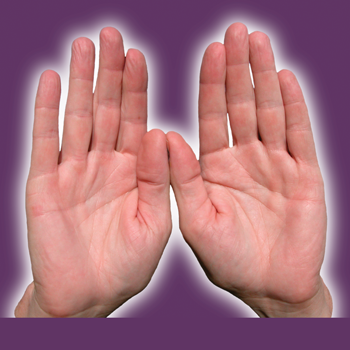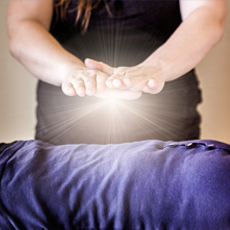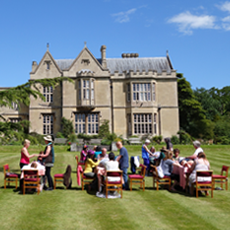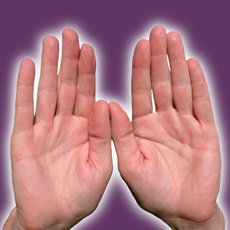by William Lee Rand
In the past several years we’ve learned a lot about the Reiki taught by Dr. Usui. The research done by Arjava Petter, his wife Chetna Kobayashi, Mr. Doi and others have created a breakthrough in our understanding of Usui Reiki and informed us of many techniques new to the West. This contrasts with what we had been told was Usui Reiki, but what we now understand was actually a Western development. When we first began to gain this understanding, many thought that the ideal would be to practice only the Japanese style of Reiki and to stay as close to what Dr. Usui practiced as possible. But now that we have had time to practice the Japanese Reiki techniques and compare them with the Western style, a better understanding has developed about what might be the best approach.
The style of Reiki presented to the West by Mrs. Takata, was promoted by her as being the unaltered methods of Dr. Usui. However, now that many have broken through the barriers that prevented us from researching Reiki in Japan, we have discovered that most of the techniques Mrs. Takata taught were mainly of her own creation and possibly that of Dr. Hayashi. When comparing her style with that of Dr. Usui, one could say that in many cases her’s was methodically opposite to what Dr. Usui practiced.
Mrs. Takata’s style relied on memorizing rules and working with standard procedures that remained the same for each client. This included the standard hand positions for giving a treatment. This was followed to such an extreme that when I attempted to give myself Reiki by placing my hands on my legs, my first Reiki teacher told me in a very emphatic way that “that is not Reiki” because it was not one of the standard hand positions. I found this attitude stifling, as it did not support the development or use of the student’s inner awareness of Reiki. It also didn’t acknowledge the differing needs of each client. However, this was not always the case as the Takata style did include some reference to allowing your Reiki hands to guide you, but this was only after one had given the standard treatment.
Even though there are some limitations to this system, it still has value. By placing the hands evenly over most of the body, the whole person is treated, thus creating balance. In addition, by using this technique, one treats the areas of greatest need automatically whether you know where they are located or not. So, while the Takata style may have limits, it allows virtually anyone to produce consistent results.
After Mrs. Takata passed in December 1980, for a while most of her students continued to practice exactly as she had taught. But in a few years, some began to experiment and to channel, develop or release new systems of Reiki. The first of these were Mari-el and the Radiance Technique. Many more followed and there are now at least 30 different kinds of Reiki being practiced in the West. In an environment like this, one needs to have a clear understanding of ones personal needs and the ability to follow ones inner guidance if one is to wisely choose which Reiki system(s) to study.
While many new techniques have developed in the West, the same basic framework taught by Mrs. Takata seems to be the basis of most of these with treatments continuing to be based on her standard hand positions.
Dr. Usui’s style represents a different approach. He didn’t have standard hand positions. He taught his students to develop the ability to use ones intuition to guide one to the right hand placements. This often resulted in a unique treatment for each client. He taught several techniques for doing this including Byosen scanning wherein one uses the sensitivity in ones hands to find the areas needing Reiki as well as Reiji-ho in which one is guided directly with ones intuition or perhaps an inner sensitivity to know where the client’s energy field is out of balance and in need of Reiki. This style validates ones own subtle awareness and encourages its development. It also allows one to develop a working relationship with the Reiki energy and thus be guided by its potential.
In addition to the above techniques, Dr. Usui also taught Gassho meditation, Kenyoku or dry bathing which is a method for cleansing ones energy, Koki-ho, a method that uses the breath to heal, Gyoshi-ho, a method of sending Reiki with the eyes, Jacki-Kiri Joka-ho, a method for clearing negative energy from objects and Enkaku chiryo which is a method for sending distant healing.
From this we can see that Mrs. Takata’s style focused on a memorized system that was the same for each client and used only the hands to transmit Reiki. In contrast, Dr. Usui’s style was flexible and relied on the developed awareness of the practitioner to provide a unique treatment based on the specific needs of the client. He also taught how to send Reiki not only with the hands, but also with the breath, and the eyes and included other techniques as well.
Since each of these styles is so different, at first many thought that they would have to choose between them. And since Reiki came from Dr. Usui, it seemed that the logical choice would be to practice Reiki as closely to Dr. Usui’s style as possible. However, now that we have had time to practice and compare both styles, what many have concluded is that since both styles have value, the best approach would be to integrate them. The feeling is that by bringing both the Western and the Japanese styles together in one system, the best of both worlds is achieved. The Western style, which is more linear, logical and left brained balances the Japanese style, which is more open ended, intuitive and right brained.
This is what we have done at the Center. Our recently revised Reiki I&II manual includes both the Western style of Reiki and the Japanese Reiki Techniques (JRTs) of Dr. Usui. The JRTs can be learned from our manual, but it is also recommended that one take a JRT class or use the JRT workshop video to get a better grasp of them. The video training is presented by Arjava Petter and Chetna Kobayashi and is an excellent way to gain an understanding of the Japanese mind as well as learn the JRTs. We also offer class outlines that show how to teach the JRTs and Western Reiki together. These outlines can be downloaded free from our website along with many other useful forms.
It is a joy to see how wonderfully Reiki is unfolding. As we focus on Reiki and allow it to guide us, we discover greater levels of harmony and balance in how it can express through us. What at first seemed like a conflict is becoming a beautiful integration of complementary styles. This will lead to the possibility of even greater levels of health and well being for ourselves, our clients and the world around us. May we all be allowed to choose ever-increasing peace, freedom and love.







